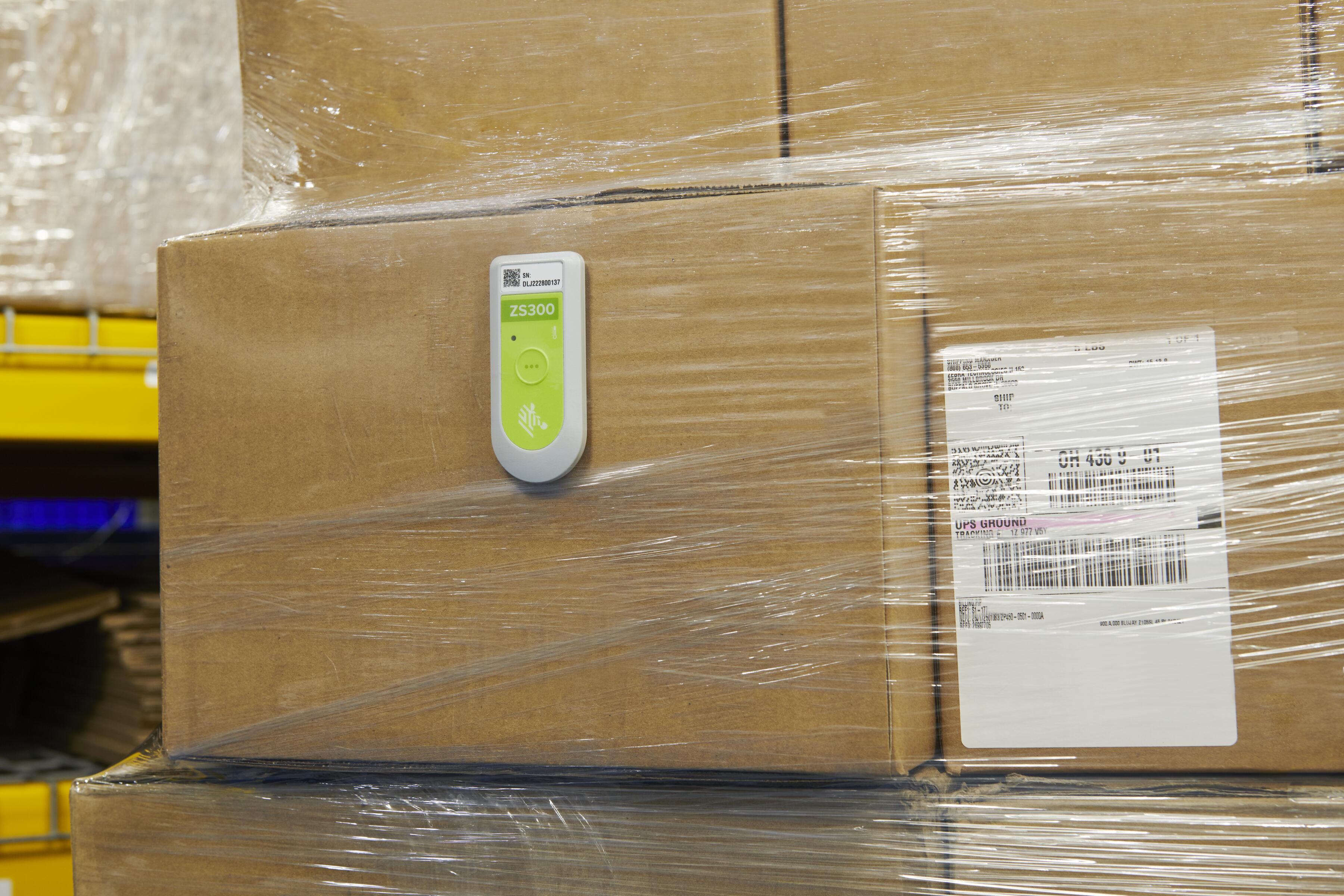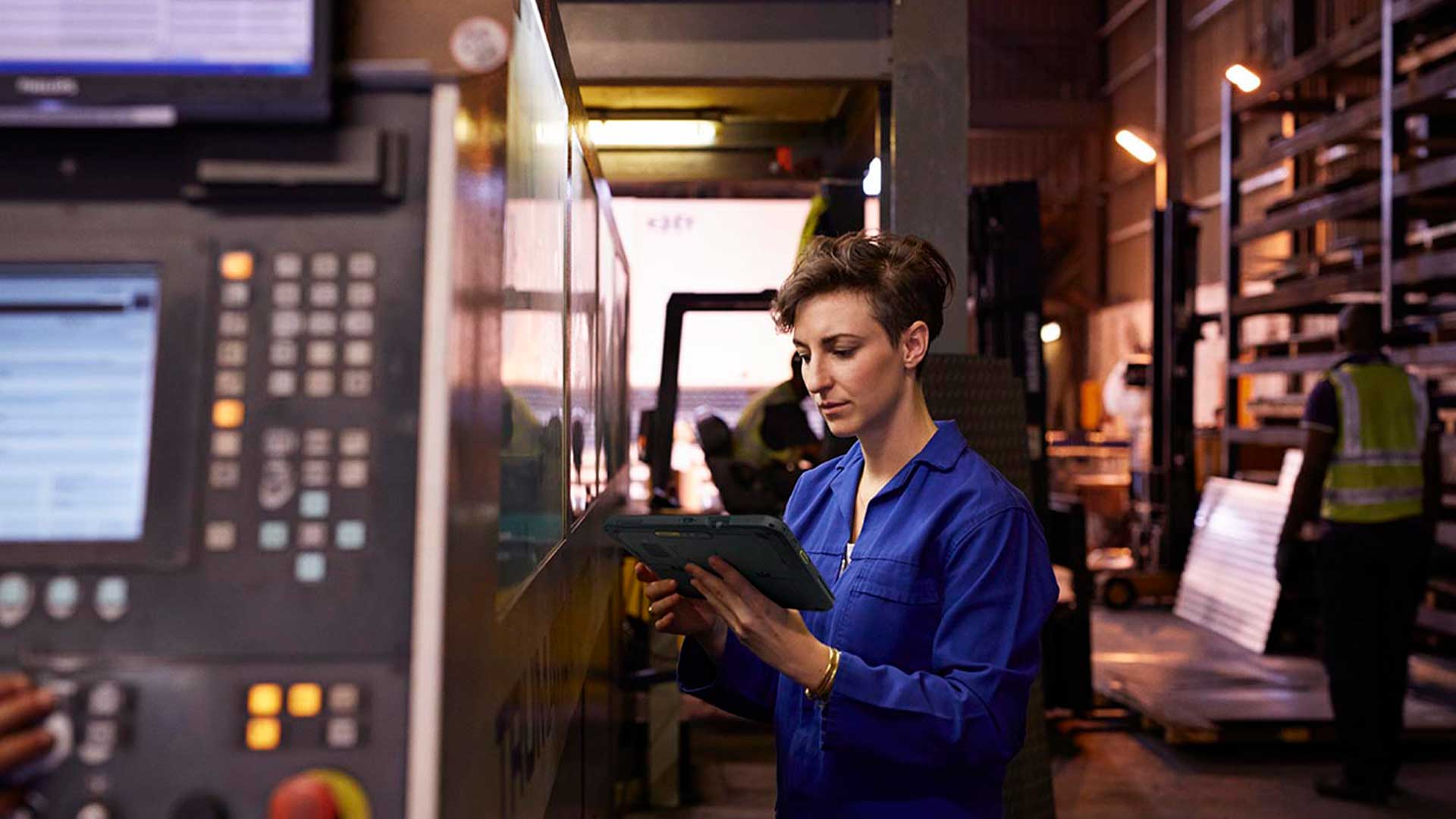Transform retail operations with Zebra’s retail technology solutions, featuring hardware and software for improving inventory management and empowering teams.
Streamline operations with Zebra’s healthcare technology solutions, featuring hardware and software to improve staff collaboration and optimise workflows.
Enhance processes with Zebra’s manufacturing technology solutions, featuring hardware and software for automation, data analysis, and factory connectivity.
Zebra’s transportation and logistics technology solutions feature hardware and software for enhancing route planning, visibility, and automating processes.
Zebra's hospitality technology solutions equip your hotel and restaurant staff to deliver superior customer and guest service through inventory tracking and more.
Zebra's market-leading solutions and products improve customer satisfaction with a lower cost per interaction by keeping service representatives connected with colleagues, customers, management and the tools they use to satisfy customers across the supply chain.
Empower your field workers with purpose-driven mobile technology solutions to help them capture and share critical data in any environment.
Zebra's range of mobile computers equip your workforce with the devices they need from handhelds and tablets to wearables and vehicle-mounted computers.
Zebra's desktop, mobile, industrial, and portable printers for barcode labels, receipts, RFID tags and cards give you smarter ways to track and manage assets.
Zebra's 1D and 2D corded and cordless barcode scanners anticipate any scanning challenge in a variety of environments, whether retail, healthcare, T&L or manufacturing.
Zebra's extensive range of RAIN RFID readers, antennas, and printers give you consistent and accurate tracking.
Choose Zebra's reliable barcode, RFID and card supplies carefully selected to ensure high performance, print quality, durability and readability.
Zebra's rugged tablets and 2-in-1 laptops are thin and lightweight, yet rugged to work wherever you do on familiar and easy-to-use Windows or Android OS.
With Zebra's family of fixed industrial scanners and machine vision technologies, you can tailor your solutions to your environment and applications.
Zebra’s line of kiosks can meet any self-service or digital signage need, from checking prices and stock on an in-aisle store kiosk to fully-featured kiosks that can be deployed on the wall, counter, desktop or floor in a retail store, hotel, airport check-in gate, physician’s office, local government office and more.
Discover Zebra’s range of accessories from chargers, communication cables to cases to help you customise your mobile device for optimal efficiency.
Zebra's environmental sensors monitor temperature-sensitive products, offering data insights on environmental conditions across industry applications.
Zebra's location technologies provide real-time tracking for your organisation to better manage and optimise your critical assets and create more efficient workflows.
Enhance frontline operations with Zebra’s AI software solutions, which optimize workflows, streamline processes, and simplify tasks for improved business outcomes.
Empower your frontline with Zebra Companion AI, offering instant, tailored insights and support to streamline operations and enhance productivity.
The everything you need to rapidly and cost effectively develop high-performance AI vision applications on Zebra mobile computers.
Zebra Workcloud, enterprise software solutions boost efficiency, cut costs, improve inventory management, simplify communication and optimize resources.
Keep labour costs low, your talent happy and your organisation compliant. Create an agile operation that can navigate unexpected schedule changes and customer demand to drive sales, satisfy customers and improve your bottom line.
Drive successful enterprise collaboration with prioritized task notifications and improved communication capabilities for easier team collaboration.
Get full visibility of your inventory and automatically pinpoint leaks across all channels.
Reduce uncertainty when you anticipate market volatility. Predict, plan and stay agile to align inventory with shifting demand.
Drive down costs while driving up employee, security, and network performance with software designed to enhance Zebra's wireless infrastructure and mobile solutions.
Explore Zebra’s printer software to integrate, manage and monitor printers easily, maximising IT resources and minimising down time.
Make the most of every stage of your scanning journey from deployment to optimisation. Zebra's barcode scanner software lets you keep devices current and adapt them to your business needs for a stronger ROI across the full lifecycle.
RFID development, demonstration and production software and utilities help you build and manage your RFID deployments more efficiently.
RFID development, demonstration and production software and utilities help you build and manage your RFID deployments more efficiently.
Zebra DNA is the industry’s broadest suite of enterprise software that delivers an ideal experience for all during the entire lifetime of every Zebra device.
Advance your digital transformation and execute your strategic plans with the help of the right location and tracking technology.
The Zebra Aurora suite of machine vision software enables users to solve their track-and-trace, vision inspection and industrial automation needs.
Zebra Aurora Focus brings a new level of simplicity to controlling enterprise-wide manufacturing and logistics automation solutions. With this powerful interface, it’s easy to set up, deploy and run Zebra’s Fixed Industrial Scanners and Machine Vision Smart Cameras, eliminating the need for different tools and reducing training and deployment time.
Aurora Imaging Library™, formerly Matrox Imaging Library, machine-vision software development kit (SDK) has a deep collection of tools for image capture, processing, analysis, annotation, display, and archiving. Code-level customisation starts here.
Aurora Design Assistant™, formerly Matrox Design Assistant, integrated development environment (IDE) is a flowchart-based platform for building machine vision applications, with templates to speed up development and bring solutions online quicker.
Designed for experienced programmers proficient in vision applications, Aurora Vision Library provides the same sophisticated functionality as our Aurora Vision Studio software but presented in programming language.
Aurora Vision Studio, an image processing software for machine & computer vision engineers, allows quick creation, integration & monitoring of powerful OEM vision applications.
Adding innovative tech is critical to your success, but it can be complex and disruptive. Professional Services help you accelerate adoption, and maximise productivity without affecting your workflows, business processes and finances.
Zebra's Managed Service delivers worry-free device management to ensure ultimate uptime for your Zebra Mobile Computers and Printers via dedicated experts.
Find ways you can contact Zebra Technologies’ Support, including Email and Chat, ask a technical question or initiate a Repair Request.
Zebra's Circular Economy Program helps you manage today’s challenges and plan for tomorrow with smart solutions that are good for your budget and the environment.

The Venetian hotel in Las Vegas feels like walking though Venice, Italy but in a luxury hotel. There’s even a quarter-mile long canal that meanders through shops and restaurants under a blue sky with fluffy white clouds painted on the ceilings. It gives the illusion of being outdoors and even turns dark as evening arrives.
The hotel is built for events, and we recently visited it for an experience covering the latest and greatest in digital health: HIMSS 2025. At the rear is a convention centre – it was the venue for our week of healthcare immersion in an exhibition hall done the Vegas way at a scale I've not seen before. Rows and rows of immense stands. Others tower high in corporate colours. A show favourite is the puppy pen where you get to relax with a pack of rescue puppies.
Then hundreds of speaking sessions to learn about all types of digital health-related content: how hospitals are traversing HIMSS' digital maturity models, how data is being used to identify and support at-risk groups, and how interoperability is being achieved across hospitals to name a few.
The top trend on everyone's lips, the crux of many demonstrations, and theme of a large proportion of talks is artificial intelligence (AI). I am eager to learn more and have picked a two-hour panel discussion with a view to be enlightened about how hospitals are achieving digital maturity by adopting the right tech, at the right scale for the right people.
The Icebreaker question to all those assembled: "In which areas is AI being used within your organisation?" We all scramble for our phones and scan a QR code on screen that grants us access to an app that collates our views. The room is filled with hospital professionals, and a few others from the healthcare supply chain.
The poll results align with what I would expect. Lots leverage AI with business functions: transcribing notes, producing content, translations etc. And then a solid chunk dedicates AI to healthcare functions - radiology, pathology and clinical trials. Healthcare, just like the rest of the world, is leveraging AI at varying levels to make life easier and increase efficiency.
Question two to the group: "Is your organisation committed to strong AI governance, and how are you progressing in this area?" I think of a major blunder by workers who unwittingly leaked top secret source code. "Yes" I transcribe. The responses from the wider group range from "what governance?", to "not at the moment" and "slow" trigger a little nervousness within me. Is there a risk of sensitive data leaking to the outside world, or are results being taken as reliable and accurate?
Missing governance, too much faith in results and uneven usage are highlighted as challenges by the panel chair. The answer to his next question, "what does everyone want from AI?" is captured succinctly by a speaker: "Less admin, less burnout, more joyful staff."
The session moves to a live demo of AI in action. On a large screen, we see a verbal consultation being transcribed directly to an electronic medical record with a useful structure applied.
As the panel discussion begins in earnest, we hear how AI is great at speeding up manual processes, like summarising consultation notes, but it also requires clinicians to think differently. Charting isn't mindless administration; it's a mechanism to organise thoughts. And if things become overly automated, does that reduce the power of observation and experience to spot anomalies?
Digital transformation is already letting us do more with the same which is critical as we seek to maintain standards as the population ages. Many countries are showing strong maturity in digitisation, with electronic medical records achieving major strides, for example. AI is still at the early adoption stage, but there are areas of significant uptake. Radiology is showing strong advances as x-rays, ultrasounds, CT scans, and MRIs can be more effectively analysed by computers as they learn about anomalies greater than the human eye unaided by AI can achieve.
Institutional change is not linear. A speaker mentioned six healthcare trusts they had worked with and their attitudes to AI. The largest took the lead and shared best practice. Two never even thought about it. The others were somewhere in the middle.
Within trusts, those curious enough to try new things often become the champion which adds pressure to the day job, inevitably putting the brakes on innovation. AI remains fragmented with lots of products remaining siloed or pilot based. Organisations struggle with a lack of governance and clear guidelines, plus clinical and administrator buy-in remains lacking.
But not everyone is ready to embrace AI. I had heard nurses talk about unions blocking AI use for fear of losing jobs despite the pressure from staff shortages. There was also a fear that if AI made nurses more efficient, leaders would just expect more and more, with no time given back to patients. The situation is delicate.
Efficiency is always at the forefront of healthcare leaders’ minds. In the UK, integrated care boards (ICBs) are collaborating and merging to reduce costs, and a large healthcare organisation in the region recently reported huge staff reductions.
AI has the power to drive efficiency without the pain of changing business structures and cutting jobs. Administrative tasks could be handed over to AI, chatbots and recorded messages. Here are some examples shared during this panel discussion:
· In one use case, we hear how results are traditionally shared within 28 days by a doctor over the phone. If it is bad news, doctor delivery is important, as there will be many questions and emotions to work through. But if it’s an all-clear, an AI-generated response is now being used to contact patients. Less clinician time, and a faster end to anxiety.
· In other examples shared, AI is being used to predict who won't show up for appointments, based on historical behaviour. Staff can proactively intervene, assess the risks of readmission, and more accurately predict length of stays.
In part two of this series, I’ll share more examples of how clinicians are effectively using AI today as well as how they can overcome data and connectivity challenges. Visit our blog next week for these and other details.
Zebra Developer Blog
Zebra Developer BlogZebra Developer Blog
Are you a Zebra Developer? Find more technical discussions on our Developer Portal blog.
Zebra Story Hub
Zebra Story HubZebra Story Hub
Looking for more expert insights? Visit the Zebra Story Hub for more interviews, news, and industry trend analysis.
Search the Blog
Search the BlogSearch the Blog
Use the below link to search all of our blog posts.
Most Recent
Legal Terms of Use Privacy Policy Supply Chain Transparency
ZEBRA and the stylized Zebra head are trademarks of Zebra Technologies Corp., registered in many jurisdictions worldwide. All other trademarks are the property of their respective owners. Note: Some content or images on zebra.com may have been generated in whole or in part by AI. ©2025 Zebra Technologies Corp. and/or its affiliates.




